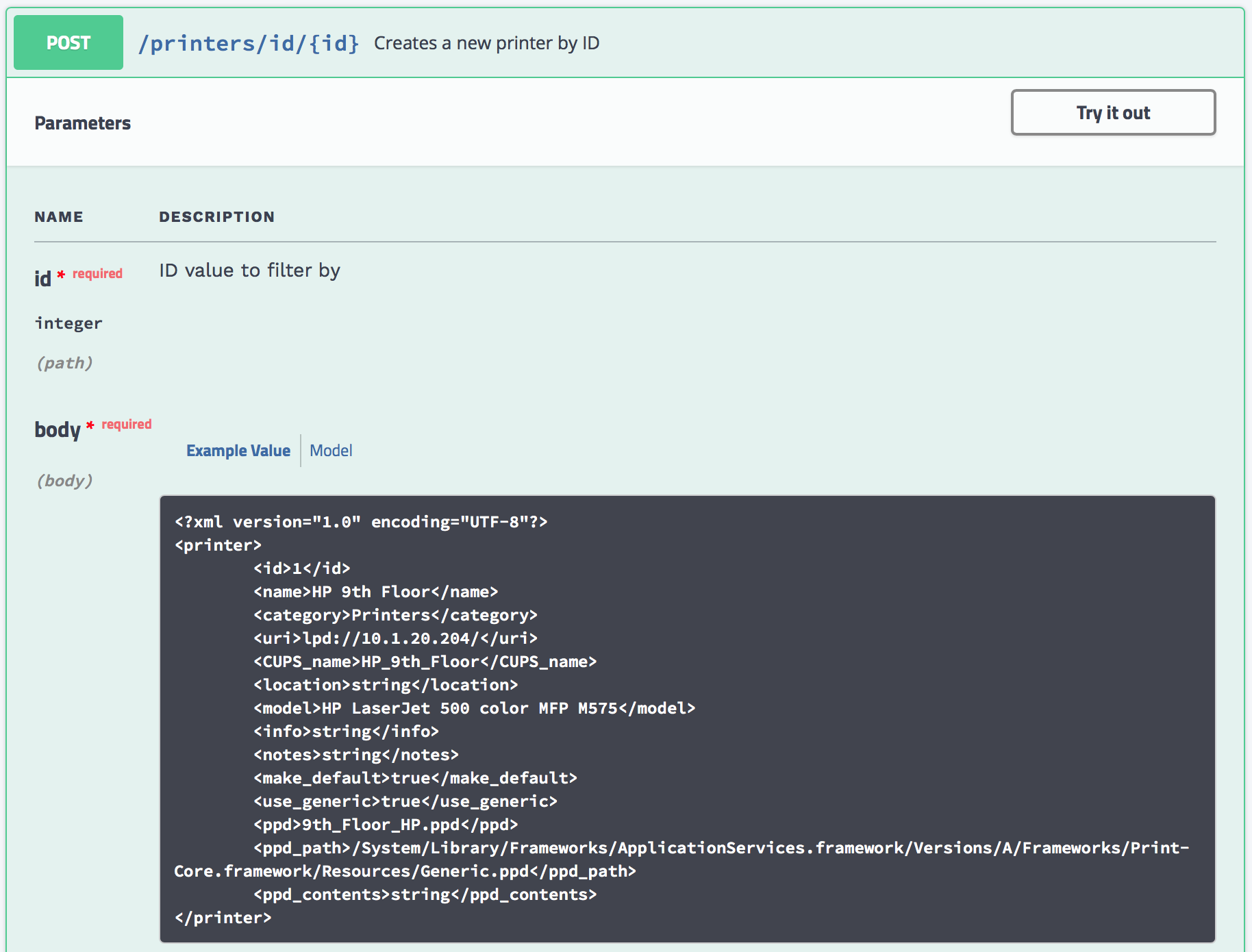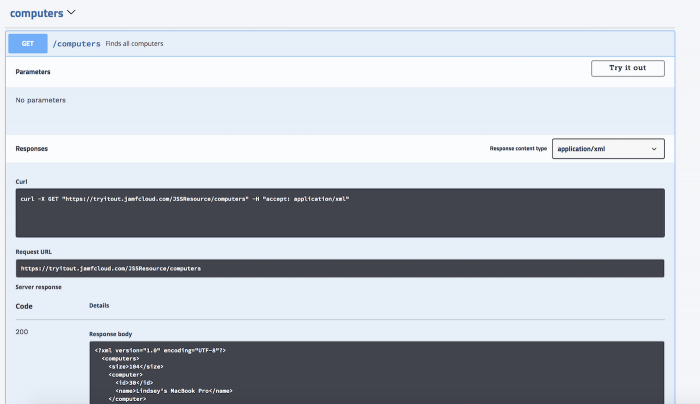

Additional data will be required either in the form of a parameter value and/or a request body. The Classic API is the primary tool for programmatic access to data on a Jamf Pro server to allow integrations with other utilities or systems. Getting StartedĪfter the collection has been imported and valid values have been defined for the variables, all calls should be supported with minimal input required. For more information on authentication changes to the Classic API, see the Jamf Developer Portal. Tokens will be requested as necessary, so no interaction with authentication endpoint should be necessary. This version of the collection utilizes scripts to manage the Bearer Token, which is a new authentication method supported in version 10.35.0 and later of Jamf Pro. Protocol, hostname and port of the Jamf Pro environment
#JAMF PRO CLASSIC API PASSWORD#
Password of the user authenticating to Jamf Pro Username to authenticate to Jamf Pro with Hostname and port of the Jamf Pro environment Follow Postman's documentation to Manage Environments. Jamf recommends using environments instead of global or collection variables simply for the ease of use and potential for defining different Jamf Pro environments or users. This collection utilizes the following variables which should be defined within one of the scopes in Postman.
#JAMF PRO CLASSIC API DOWNLOAD#

For Jamf Pro version 10.34.0 and earlier: Click the button to automatically import the collection into your Postman app.Use the following options to import the collection into Postman: To access the landing page, append '/api' to your Jamf Pro URL. Async chunks in parallel (required, default: 20 ) - The number of chunks. If cleared, Axonius will use the Classic API.

If you can clarify what product youre using, thatll help identify what workflow/API would be best to accomplish your goal. Jamf School has an API, with public documentation available here.Jamf Pro has two APIs, the Classic API and Jamf Pro API, both with documentation available here. You can access documentation for both the Jamf Pro API and the Classic API from the new API landing page. Use pro API - Select to use Jamf Pro API. It sounds like you might be conflating the various Jamf APIs and products. The base URL for the Jamf Pro API is /api. All query parameters that have a defined list of acceptable values denote the allowed values in the description of the parameter. The Jamf Pro API is open for user testing.computercommmands and mobiledevicecommands). Endpoints that have conditional inputs in the form of parameters or request bodies should include multiple examples (e.g.All GET operations include at least one example response.
#JAMF PRO CLASSIC API UPDATE#
Pull requests or issue submissions are encouraged to enhance or update this data.This request body may not include all fields supported by the body of the given object, however it will include those required to successfully create the object.All POST operations include a pre-populated request body.The following expectations were used when designing this collection: This article describes the recommended Postman configuration and setup process to import the collection, configure variables to connect it to your Jamf Pro environment and begin testing API calls and interacting with your Jamf Pro environment via the Classic API. It provides a quick method to interact with all non-deprecated endpoints. So all class names are plural, regardless if they represent a list of objects or one object.This collection is provided to assist Jamf Pro users of the Classic API. Lists of records and individual records use the same object type as well. All Jamf Pro data is stored as a Python dictionary that is accessed with the data() method. Objects do not have member variables for Jamf data. The python-jamf module also provides undocumented access to Jamf Admin functionality used for uploading items to Jamf Distribution Points.Ĭurrently, the python-jamf supports 56 Jamf records like Buildings, Categories, Computers, OSXConfigurationProfiles, and Policies for example.Įach record is a Python object, but they are generic. It handles the URL requests, authentication, and converts between XML/JSON to Python dictionaries/lists. The python-jamf API class doesn't hide anything from you. The concept behind it is to have a class or simply a collection of data (variables) and methods (functions) that maps directly to the API ( ). The Classic API is the primary tool for programmatic access to data on a Jamf Pro server to allow integrations with other utilities or systems. Python-jamf is a Python 3 module to access the Jamf Pro Classic API.


 0 kommentar(er)
0 kommentar(er)
